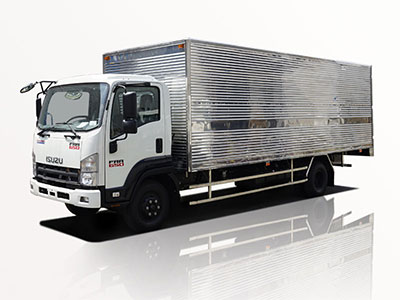Introduction
Tractor trailers are essential for transporting goods across vast distances, and having a clear understanding of their electrical systems is crucial for any operator. One of the most vital components of a tractor trailer’s electrical system is the lighting. This article will delve into the tractor trailer light wiring diagram, breaking down the components and providing practical insights into installation, troubleshooting, and maintenance.
1. The Importance of Tractor Trailer Lighting
Safe operations of tractor trailers heavily rely on functional lighting systems. The lights communicate the vehicle’s presence, intentions, and status to other road users. Proper lighting helps prevent accidents, thus making the understanding of wiring diagrams paramount for maintenance and repairs.
1.1 Types of Lights Commonly Used
- Headlights: Illuminate the road ahead
- Tail Lights: Indicate the rear presence
- Brake Lights: Signal stopping
- Turn Signal Lights: Show intent to change direction
- Marker Lights: Indicate overall vehicle dimensions
- Fog Lights: Improve visibility in poor weather conditions
2. Understanding the Wiring Diagram Components
A tractor trailer light wiring diagram is a visual representation that outlines how the wiring and electrical components are interconnected. Key components include wires, connectors, lights, switches, and fuses. Understanding these components is critical for effective troubleshooting and repairs.
2.1 Wiring Color Codes
Familiarizing yourself with the standard color codes is essential for correctly interpreting the wiring diagram.
| Wire Color | Function |
|---|---|
| Red | Power |
| Brown | Tail Lights |
| Yellow | Left Turn Signal |
| Green | Right Turn Signal |
| White | Ground |
3. Basic Wiring Setup for Tractor Trailers
3.1 Common Wiring Schemes
In most tractor trailer setups, the wiring is divided into two categories: the tractor’s electrical system and the trailer’s electrical system. Generally, the tractor supplies power to the trailer through a multi-pin connector.
3.2 Connector Types
- 7-Pin Connector: Frequently used for trailers under 26,000 lbs.
- 9-Pin Connector: Suitable for heavy-duty applications.
- 12-Pin Connector: Often used for specialty trailers.
3.2.1 Wiring Layout
A standard 7-pin connector layout includes:
- Pin 1: Ground
- Pin 2: Tail Lights
- Pin 3: Left Turn Signal
- Pin 4: Right Turn Signal
- Pin 5: Brake Lights
- Pin 6: Reverse Lights
- Pin 7: Power Supply for Electric Brakes
4. Reading a Tractor Trailer Light Wiring Diagram
Understanding how to read a wiring diagram is crucial. Here’s how:
4.1 Identifying Circuit Paths
Trace the flow of electricity from the battery through the various components to the lights. Each circuit branch represents a different component.
4.2 Recognizing Symbols
Familiarize yourself with common symbols such as:
- Circle: Represents lights
- Square: Represents connectors
- Lines: Represent wires
5. Installation Tips for Tractor Trailer Lights
5.1 Gathering Necessary Tools
Before installation, ensure you have the following tools ready:
- Wire Strippers
- Soldering Iron or Crimping Tool
- Electrical Tape
- Heat Shrink Tubing
- Voltage Tester
5.2 Step-by-Step Installation Process
- Disconnect the battery before starting the installation.
- Identify the connection points on both the tractor and trailer.
- Using the wiring diagram, connect the appropriate wires, ensuring correct color matching.
- Secure all connections using electrical tape or heat shrink tubing.
- Connect the battery and test the lights before sealing any access points.
6. Troubleshooting Common Lighting Issues
6.1 Identifying Problems
Common issues include dim lights, flickering, and non-functioning lights. The first step is inspecting connections and fuses.
6.2 Using a Voltage Tester
A voltage tester can help determine if power is reaching each component. Check the following:
- Ground connections are solid and free from corrosion.
- Wires have continuity and are not damaged.
- Check the voltage at each light socket.
7. Maintenance of the Lighting System
7.1 Regular Inspections
After long trips, it’s essential to visually check all lights for functionality and signs of wear.
7.2 Cleaning Connectors and Wire Ends
Corrosion can build up on connectors and lead to poor connections. Regular cleaning with a wire brush and applying dielectric grease can extend the life of the wiring.
8. Safety Compliance and Regulations
It’s important to be aware of safety regulations regarding trailer lights to ensure compliance with local laws and avoid penalties.
8.1 DOT Regulations
The Department of Transportation (DOT) sets specific requirements for lighting on commercial vehicles. Ensure your tractor trailer adheres to these standards.
8.2 Importance of Reflectivity
In addition to lighting, reflective materials are often required on trailers to enhance visibility, particularly during low-light conditions.
9. Practical Examples for Different Trailer Types
9.1 Flatbed Trailers
Flatbeds often require additional marker lights due to the absence of bodywork. Ensuring these are wired correctly is crucial for safety.
9.2 Enclosed Trailers
Enclosed trailers may need additional internal lighting. Follow the wiring diagram closely to wire these interior lights safely.
FAQ Section
What is a tractor trailer light wiring diagram?
A tractor trailer light wiring diagram is a visual representation of how the electrical components of a truck and trailer are connected, outlining wire colors and functions.
How do I troubleshoot my tractor trailer lights?
Start by checking fuses and connections. Use a voltage tester to ensure power reaches the light sockets. Look for damaged wires or corrosion on connectors as potential issues.
Can I install trailer lights on my own?
Yes, with basic tools and knowledge of wiring diagrams, you can install trailer lights. Ensure to follow safety precautions and proper connection guidelines.
What tools do I need for tractor trailer light installation?
Common tools include wire strippers, soldering iron or crimping tool, electrical tape, heat shrink tubing, and a voltage tester.
Are there regulations for trailer lighting?
Yes, the Department of Transportation (DOT) has specific regulations regarding the type, number, and placement of lights on commercial trailers to ensure safety on the roads.
How often should I check my trailer lights?
It’s advisable to check your trailer lights regularly, especially before long trips or after any extensive usage, to ensure all components are functioning correctly and safely.





